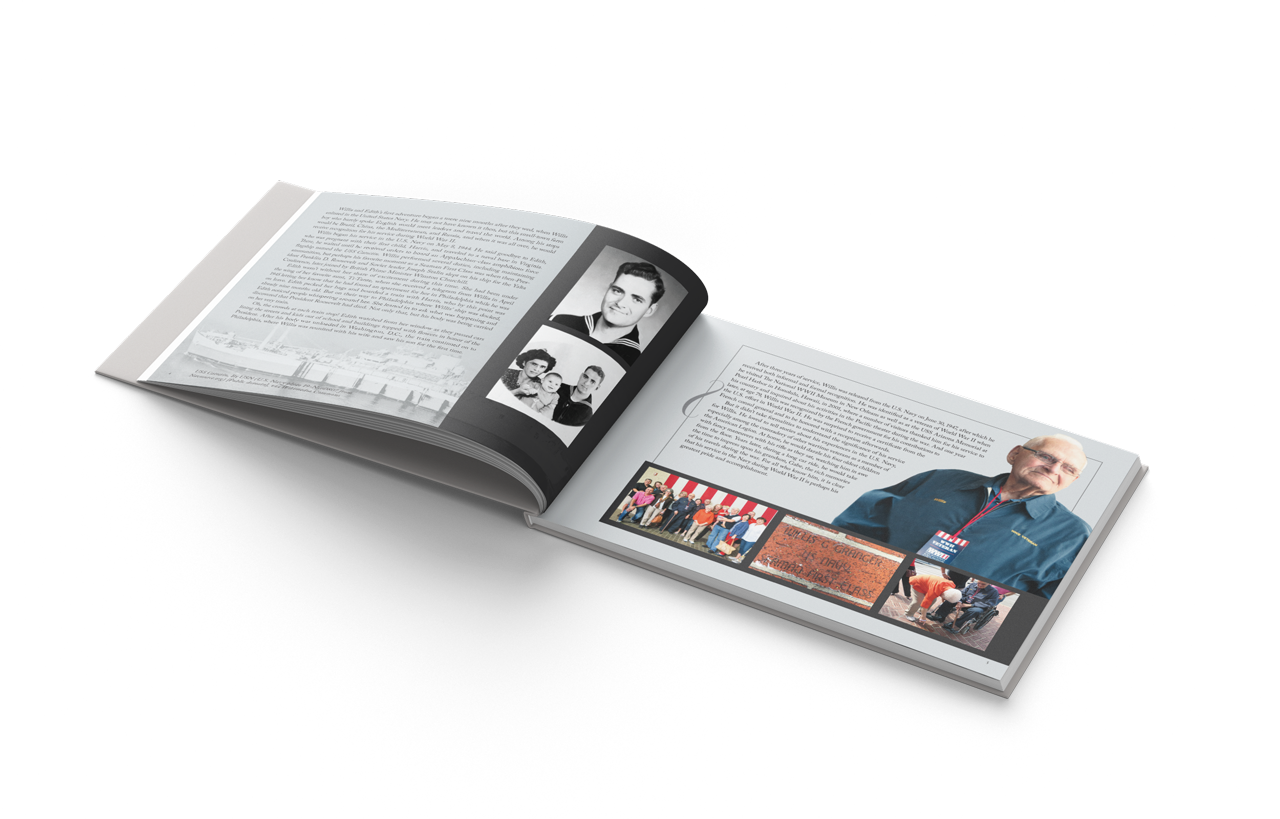Let me tell you: It can be humbling to experience your own business process. That’s what I discovered when I decided to publish a book for my family.
It’s a bit surprising, considering I have the joy of publishing several books every year for other families. Many are kept private, but some are made public. Here are a couple of examples:


So I already knew that a book is a beautiful way to honor a family’s legacy. It captures all of the people, stories and pictures that matter. It’s a perfect gift for future generations.
I also already knew the deep emotions that come with a family project. I walk with clients every day through the highs and lows of the process.
But switching from “publisher” to “author” provided a whole new perspective. Here are a few things you should know – from both perspectives – before you embark on a book for your family.
- It takes more time than you think.
A book involves many steps. There’s writing, editing, proofreading, formatting, cover design, and printing. Most authors take a year or two to see their ideas in print.
Now add a family to that process. There are questions to write, interviews to schedule, photographs to collect and people to coordinate. There’s a lot to do.
So begin with the end in mind. What kind of book do you want? Do you need it by a certain date? A publisher can help you set a realistic schedule and expectations based on your goals.
In my case, I was aiming for a big event. In 10 months, my grandparents would be celebrating their 75th wedding anniversary. The entire family – a very large Cajun family – would be gathering for the special occasion. I couldn’t think of a better way to honor my family than to publish a book in honor of my grandparents.
My deadline determined the type of book I could produce. I knew I wouldn’t have time for a comprehensive family history in 10 months. So I settled on a coffee table book. Short stories with photographs were more manageable in the time available.
With my goals in place, I got to work.


- It takes more energy than you think.
You’d be surprised at how difficult it is to gather everyone and everything you need. Especially in a large family. Family members intend to help, but they’re busy.
And when you do gather what you need, it’s a challenge to know what to do with it all. The stories need to be cobbled together, and the photographs need to meet printing standards.
It’s helpful to define the “must-haves” and the “nice-to-haves.” For my book, the must-haves were my grandparents and their 11 children. I pursued them by email and phone until I had an opportunity to connect with each. The “nice-to-haves” were the 30+ grandchildren. I sent a blanket invitation and deadline to contribute to the book.

So be prepared to set deadlines – and then be prepared to blow past them. Be prepared to drive to hometowns, dig through boxes of old photos, and have long conversations. With persistence, the pieces will eventually come together. And with a little patience, a publisher can help you organize content and images in a way that makes sense.

- It’s more rewarding than you think.
I thought I knew the satisfaction that authors felt when their books arrive. That is, until mine arrived . . . just six days before the big event.

I carefully pulled open the boxes and looked at my book, reflecting on everything that had gone into the last 10 months. The late nights and the endless scanning of photos. The initial excitement and the growing concern about time. Every big and small decision that went into the design.



I cried tears of relief and joy. It was worth every minute.

The family at the 75th wedding anniversary celebration
 Ella Ritchie (pictured during an interview with her grandmother) is the founder of Stellar Communications Houston, a nonfiction book publishing and marketing team for nonfiction authors, business leaders, nonprofits, and families.
Ella Ritchie (pictured during an interview with her grandmother) is the founder of Stellar Communications Houston, a nonfiction book publishing and marketing team for nonfiction authors, business leaders, nonprofits, and families.
